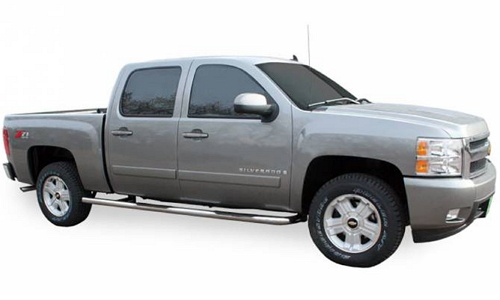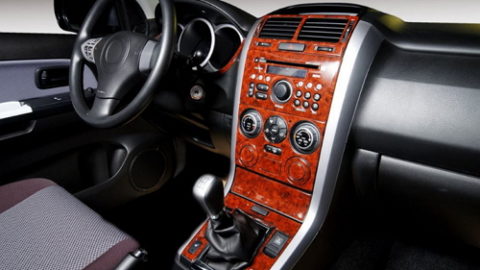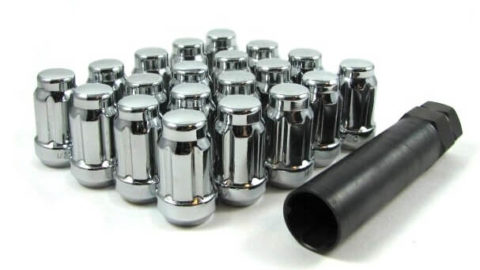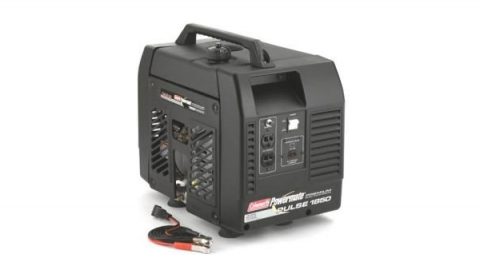Originally, the term ‘nerf bar’ meant a tubular metal device, that attached to the side of a single- or double-seat race car. The word itself derives from ‘nerf’ – small collision between two vehicles. This is usually an intentional collision, when one vehicle bumps the other one on purpose, in order to overtake. So, the main function of a nerf bar originally was to protect the car body and spinning wheels from the impact. This was made for safety purposes, because it is hard to predict the tractions of two vehicles if their wheels contact at high speeds.
A more commercial application of the nerf bar is for convenience purposes on a pickup truck or sport utility vehicle. It may act as a step to ease entry and exit from the vehicle, or to help prevent damage to the vehicle when crossing rocks off-road. Nerf bars can also be used to double as side bull bars on off-road vehicles. Nerf bars sometimes are called “rocker bars”, especially when they are used for the off-road or rock-crawling application.The main purpose of the off-road nerf bars is to protect the rocker panels of the vehicle (hence the name). That is why no wonder such bars do not feature a convenient stepping surface, or it is very minimal. Such construction is made for body reinforcement.
The term is sometimes applied to the foot-rests on a motorcycle. Nerf bars are typically made from either stainless steel, chrome or powder-coated steel, although there are considerable variations in style and design. For motorcycle tank/engine protection systems on dual sport motorcycles, the term “P.D. Nerf” was invented by Happy Trails Products for the Kawasaki KLR 650. On quad bikes nerf bars are used to help stop the wheels of two machines becoming entangled.
They are also variously known as step bars, boss bars, tube steps, step rails, truck steps, or step tubes.
The most common types of nerf bars are: cab length step bars, wheel-to-wheel nerf bars, oval tube steps, sport tubes and single steps. The installation is common for all nerf bars and includes universal or model specific brackets. Brackets are attached either to rocker panels or bolt on directly to the frame of a vehicle. Some model specific brackets for nerf bars do not require drilling and use existing mounting holes in the frame of a vehicle.

Wheel-to-wheel nerf bar by Luverne
As a rule, such nerf bars are made of thicker steel, and are mounted directly to the frame, not to the body. This construction allows the vehicles easier slide between the rocks and trees. Also, it allows using the bars as extra protection for the sides, and also may be used to jack a vehicle to change a tire. Usually, such nerf bars application is called Rock Bars or Rock Sliders, but not Nerf Bars.










